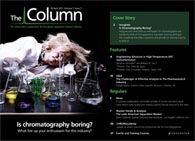Space station water supply
NASA has selected ITT Analytics' OI Analytical total organic carbon analyser to measure water quality on board the International Space Station. A conductivity temperature meter from the company will also be used.
NASA has selected ITT Analytics’ OI Analytical total organic carbon analyser to measure water quality on board the International Space Station. A conductivity temperature meter from the company will also be used.
“ITT Analytics is delighted that two of its instruments will be playing a key role,” said Chris McIntire, the company’s president. He went on to say that the instruments’ precision, robustness and accessibility will “ensure superior performance in the ISS’s demanding environment.”
The analyser was developed in collaboration with NASA specifically for use on the ISS, and will be used to analyse the organic carbon level in the water that has been processed and purified to ensure it is safe for human consumption in line with International Space Station medical operations’ requirements. The analyser includes electrochemical-oxidation technology and the company reports that it will maintain long-term calibration stability with minimal maintenance. The instruments were launched earlier this year, and the company’s work with NASA was on show at Pittcon 2011.
For more information about the company visit www.ittanalytics.com
This story originally appeared in The Column. Click here to view that issue.
New Method Explored for the Detection of CECs in Crops Irrigated with Contaminated Water
April 30th 2025This new study presents a validated QuEChERS–LC-MS/MS method for detecting eight persistent, mobile, and toxic substances in escarole, tomatoes, and tomato leaves irrigated with contaminated water.
University of Tasmania Researchers Explore Haloacetic Acid Determiniation in Water with capLC–MS
April 29th 2025Haloacetic acid detection has become important when analyzing drinking and swimming pool water. University of Tasmania researchers have begun applying capillary liquid chromatography as a means of detecting these substances.

.png&w=3840&q=75)

.png&w=3840&q=75)



.png&w=3840&q=75)



.png&w=3840&q=75)










